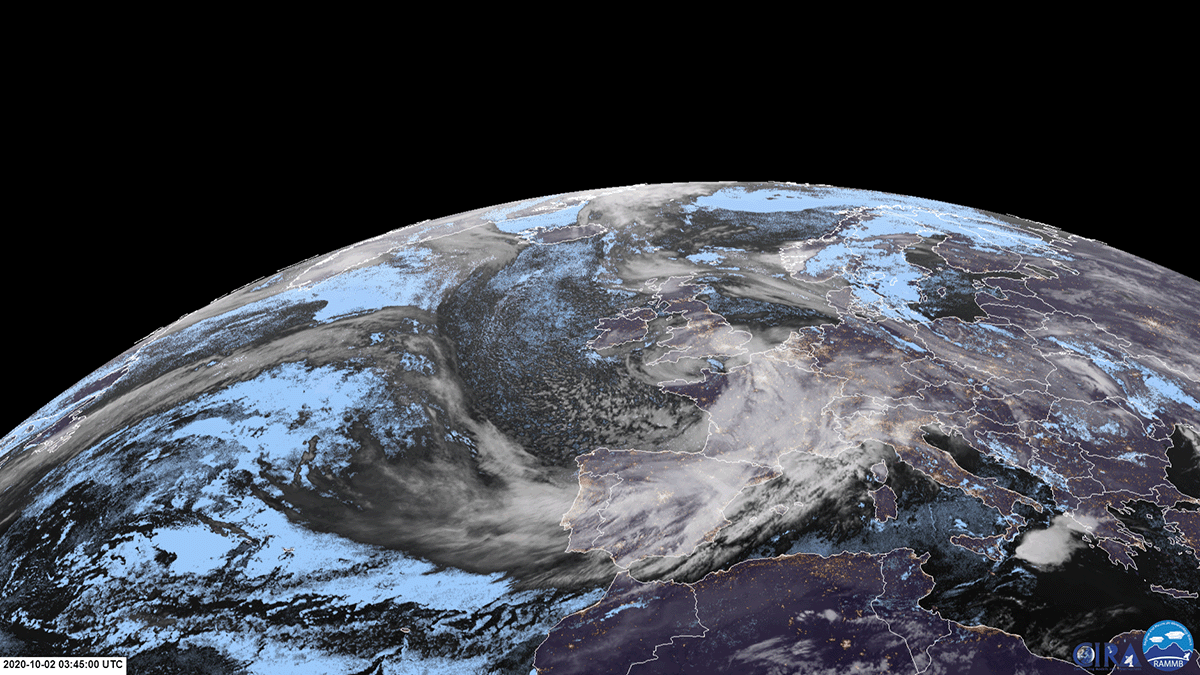
On Friday, October 2, 2020, EUMETSAT’s Meteosat-11 satellite viewed Storm Alex as it transversed southeastward across France between Thursday evening and early Friday morning. An unusually intense storm, wind gusts have reached up to 115 mph in Belle Ile and ranged from 62 to 74 miles per hour throughout the French department of Brittany. Additionally, Meteo France forecasters issued a code red alert for rain up to three inches within three hours in Alpes-Maritime, over 800 miles to the southeast.
Authorities expected that rain levels could reach up to nine inches there before the storm’s conclusion. Along with the heavy rain, a wave orange alert was issued for the coast of Alpes-Maritime, and in Brittany, high winds from Storm Alex knocked out power for 100,000 households.
Why does Meteosat-11 imagery look so different from ours, if they’re both looking at the same planet? The answer is that Meteosat-11 uses an RGB composite called Natural Color Enhanced, to visualize weather conditions from space. Meteosat-11 uses SEVIRI—or the Spinning Enhanced Visible and Infrared Imager—as their counterpart for GOES-R series’ Advanced Baseline Imager (ABI), but it only has 12 channels in comparison to ABI’s 16. The GOES-R series' ABI has red and blue, with additional information from Himawari-8's ABI to make green. The SEVIRI instrument, however, only can "see" red. It also uses white shades to desaturate what it sees as the actual coloring of earth, making it more natural-appearing to human eyes.
In geostationary orbit at approximately 22,300 miles above the equator, the Meteosat-11 satellite operates over Europe, Africa, and the Atlantic Ocean. Meteosat-11 (launched from the Guiana Space Centre in Kourou in 2015) is positioned at 0.0 degrees Longitude and provides full disc imagery every 15 minutes. Meteosat-11 is one of the four geostationary satellites operated by EUMETSAT (European Organisation for the Exploitation of Meteorological Satellites).
